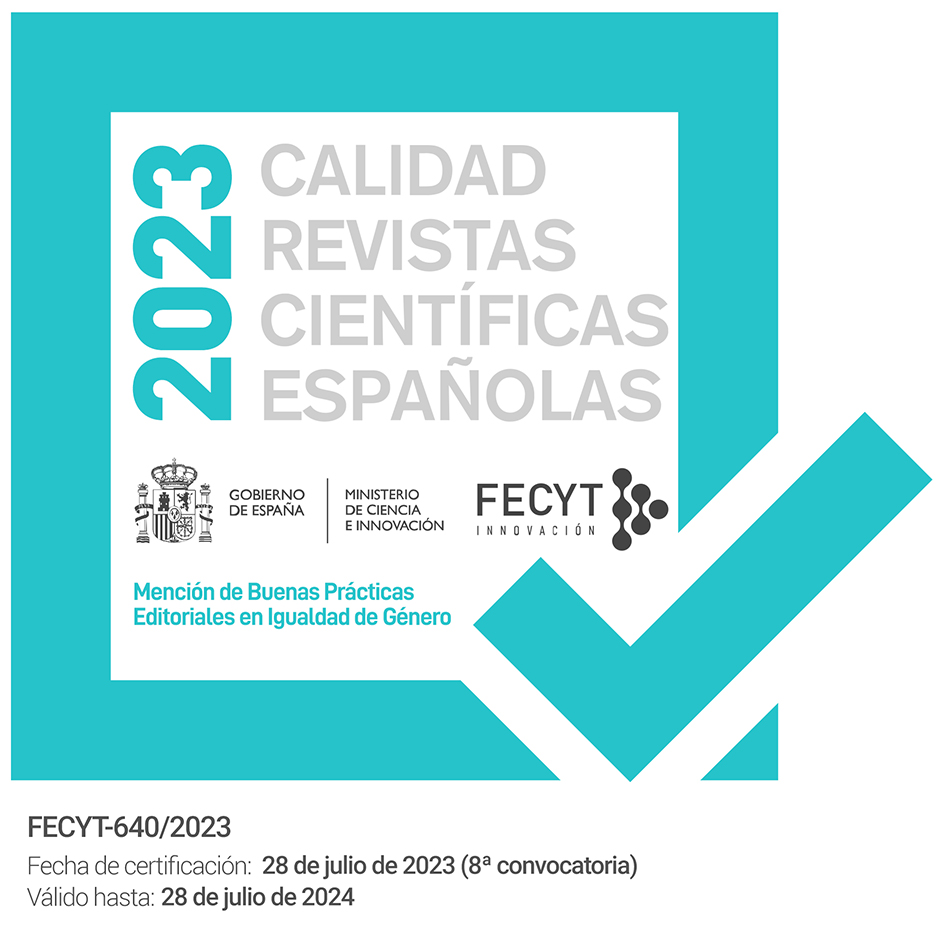Study about the current use of non-prescription drugs in community pharmacy patients
DOI:
https://doi.org/10.60103/phc.v26.e858Keywords:
non-prescription drugs; community pharmacy; pharmacist; dispensingAbstract
Introduction: The poor control and monitoring that is sometimes done during the dispensing of non-prescription drugs, coupled with the increase in the acquisition of these medications over the internet, generates significant concern about the use that is being made of them. The aim of this study was to analyze the actual current use of non-prescription drugs in community pharmacies.
Methods: a cross-sectional observational study was carried out on patients who went to the community pharmacy to pick up non-prescription drugs. A questionnaire was elaborated in which demographic variables and data about the drugs dispensed, the patient's knowledge of the drug and medication-related problems were analyzed.
Results: Most of the participants were women, aged 31-45 years. The most dispensed medications were analgesics/anti-inflammatories, antihistamines, expectorants, anti-influenza, laxatives, analgesics/antipyretics, decongestants and insomnia drugs. Seventy-one percent of the respondents claimed to have information on the medication dispensed, with 50% of the information having been provided by a pharmacist. No indication errors or adverse effects were observed, but in 18% of cases the duration of treatment was longer than recommended.
Conclusions: This study shows a correct use of non-prescription drugs in most of the population analyzed due, at least in part, of the patients' high degree of knowledge about their treatment, provided mostly by pharmacists.
Downloads
References
Seva-izquierdo I, Flores-dorado M, Martínez-Martínez F. Automedicación previa a la indicación farmacéutica en gripe o resfriado. Vitae, 2014;21(1);30-37. http://www.scielo.org.co/scielo.php?script=sci_arttext&pid=S0121-40042014000100004
Sánchez-Sánchez E, Fernández-Cerezo FL, Díaz-Jimenez J, Rosety-Rodriguez M, Díaz AJ, Ordonez FJ, et al. Consumption of over-the-Counter Drugs: Prevalence and Type of Drugs. Int J Environ Res Public Health. 2021;18(11):5530. DOI: 10.3390/ijerph18115530.
El mercado farmacéutico online en España. IM Farmacias.2020;(102):42–47.
Elogia Pharma - II Estudio Patient Digital Touchpoints 2022 Categoría OTC | PPT [Internet]. [cited 2024 Jul 3]. Available from: https://es.slideshare.net/slideshow/elogia-pharma-ii-estudio-patient-digital-touchpoints-2022-categora-otc/253855321
Estudio Arce Media & BERBĒS sobre la inversión publicitaria en la industria farmacéutica año 2021. [Internet]. [cited 2024 Jul 3]. Available from: https://www.arcemedia.es/informes/adtivity/ADTIVITY_FARMACIAS_2021.pdf [Internet].
National Council on Patient Information and Education. Attitudes and Beliefs About the Use of Over-the-Counter Medicines: A Dose of Reality A National Survey of Consumers and Health Professionals. 2002 [cited 2024 Jul 3]; Available from: https://www.bemedwise.org/wp-content/uploads/2019/12/final_survey.pdf
Farmaceuticonline. ¿Cuáles son los riesgos de la automedicación? [Internet, cited 2024 Jul 3]. Available from: https://www.farmaceuticonline.com/es/cuales-son-los-riesgos-de-la-automedicacion/
Foro de Atención Farmacéutica-Farmacia Comunitaria (Foro AF-FC) panel de expertos. Guía práctica para los Servicios Profesionales Farmacéuticos Asistenciales desde la Farmacia Comunitaria. Consejo General de Colegios Oficiales de Farmacéuticos. 2024.
Kevrekidis DP, Minarikova D, Markos A, Malovecka I, Minarik P. Community pharmacy customer segmentation based on factors influencing their selection of pharmacy and over-the-counter medicines. Saudi Pharmaceutical Journal. 2018;26(1):33–43. DOI: https://doi.org/10.1016/j.jsps.2017.11.002
Major C, Vincze Z. Consumer habits and interests regarding non-prescription medications in Hungary. Fam Pract. 2010;27(3):333–8. DOI: 10.1093/fampra/cmp105
Shiffman S, Battista DR, Kelly JP, Malone MK, Weinstein RB, Kaufman DW. Prevalence of exceeding maximum daily dose of paracetamol, and seasonal variations in cold-flu season. Br J Clin Pharmacol. 2018;84(6):1250–7. DOI: 10.1111/bcp.13551
Ito K, Weinberger KR, Robinson GS, Sheffield PE, Lall R, Mathes R, et al. The associations between daily spring pollen counts, over-the-counter allergy medication sales, and asthma syndrome emergency department visits in New York City, 2002-2012. Environmental Health, 2015;14(1):71. DOI: 10.1186/s12940-015-0057-0
Sarganas G, Buttery AK, Zhuang W, Wolf IK, Grams D, Rosario AS, et al. Prevalence, trends, patterns and associations of analgesic use in Germany. BMC Pharmacol Toxicol. 2015;16(1):1–13. DOI: https://doi.org/10.1186/s40360-015-0028-7
Hämeen-Anttila K, Pietilä K, Pylkkänen L, Pohjanoksa-Mäntylä M. Internet as a source of medicines information (MI) among frequent internet users. Research in Social and Administrative Pharmacy. 2018;14(8):758–64. DOI: 10.1016/j.sapharm.2017.09.007
Calamusa A, Di Marzio A, Cristofani R, Arrighetti P, Santaniello V, Alfani S, et al. Factors that influence Italian consumers’ understanding of over-the-counter medicines and risk perception. Patient Educ Couns. 2012;87(3):395–401. DOI: 10.1016/j.pec.2011.10.003
Meltzer EO, Ratner PH, McGraw T. Oral Phenylephrine HCl for Nasal Congestion in Seasonal Allergic Rhinitis: A Randomized, Open-label, Placebo-controlled Study. Journal of Allergy and Clinical Immunology: In Practice. 2015;3(5):702–8. DOI: 10.1016/j.jaip.2015.05.007
Syed H, Som S, Khan N, Faltas W. Reminder of important clinical lesson: Doxylamine toxicity: seizure, rhabdomyolysis and false positive urine drug screen for methadone. BMJ Case Rep. 2009;bcr09.2008.0879. DOI: 10.1136/bcr.09.2008.0879
Schmiedl S, Rottenkolber M, Hasford J, Rottenkolber D, Farker K, Drewelow B, et al. Self-Medication with Over-the-Counter and Prescribed Drugs Causing Adverse-Drug-Reaction-Related Hospital Admissions: Results of a Prospective, Long-Term Multi-Centre Study. Drug Safety. 2014;37(4):225–35. DOI: 10.1007/s40264-014-0141-3
Downloads
Published
How to Cite
Issue
Section
License
Copyright (c) 2024 Javier Peña Mendiola, Beatriz Somoza Hernández, Marta Gil Ortega

This work is licensed under a Creative Commons Attribution-NonCommercial-ShareAlike 4.0 International License.
La revista Pharmaceutical Care España se publica bajo una licencia «Creative Commons, Reconocimiento, No Comercial y Compartir Igual 4.0 Internacional» (CC BY-NC-SA 4.0)», que permite a otros compartir el trabajo con un reconocimiento de la autoría del trabajo y la publicación inicial en esta revista (con excepción de los usos comerciales).
Los autores que publican en esta revista están de acuerdo con los siguientes términos:a) Los autores conservan los derechos de autor (derechos morales) y garantizan a la revista el derecho de ser el primer soporte documental publicado del trabajo.
b) Se permite y anima a los autores a difundir la versión del trabajo revisado por pares y aceptada para su publicación (por ejemplo, en repositorios institucionales o temáticos), recomendando hacerlo con la versión final del editor “pdf”, “html” o “xml”).








